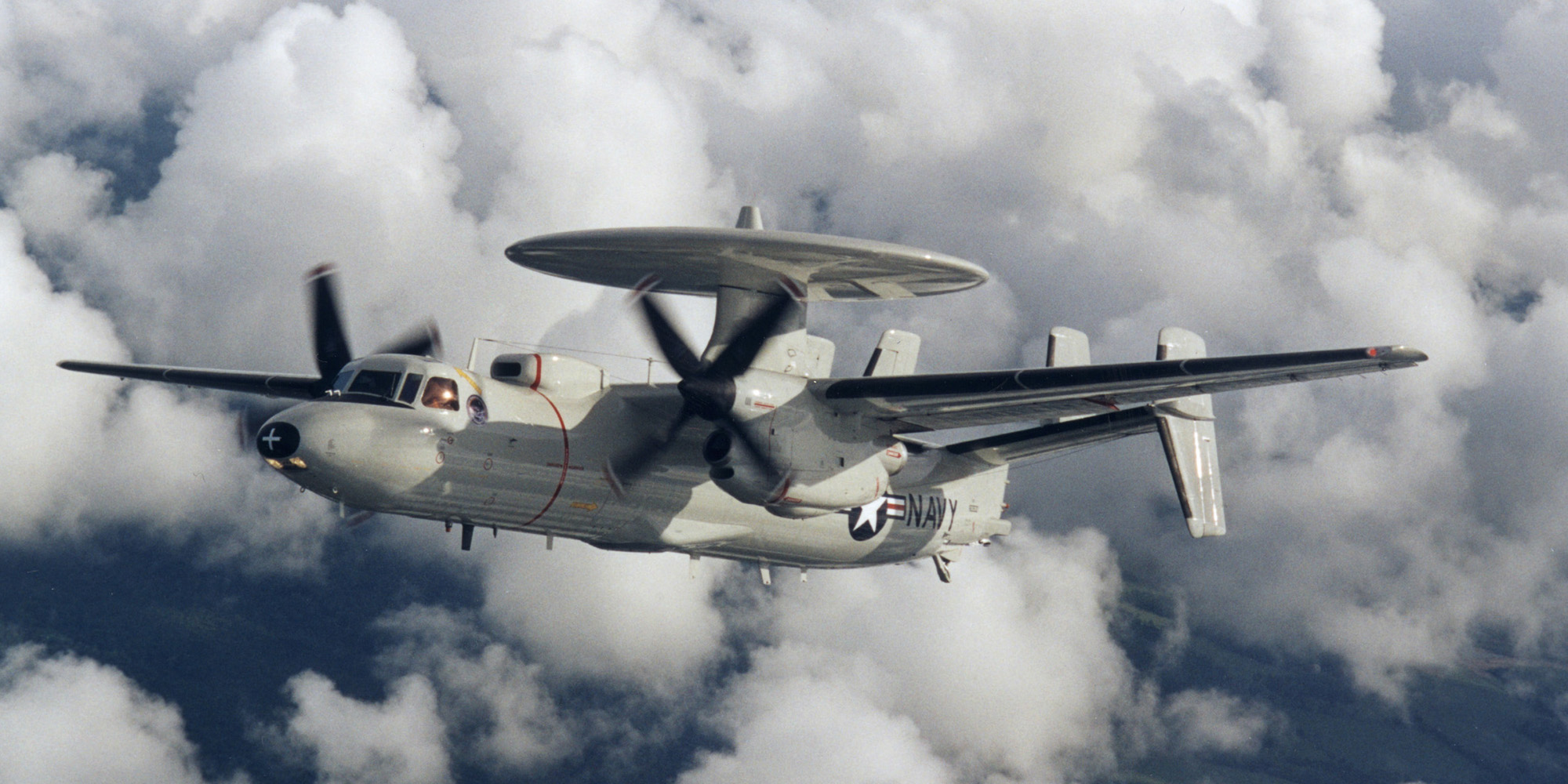E-2C Hawkeye 2000
The all-weather E-2 Hawkeye airborne early warning and battle management aircraft has served as the "eyes" of the U.S. Navy fleet for more than 30 years.


Program Overview
The all-weather E-2 Hawkeye airborne early warning and battle management aircraft has served as the "eyes" of the U.S. Navy fleet for more than 30 years, and the E-2C Hawkeye 2000 possesses the most advanced AEW&BM capabilities in service today. Continuous modifications and upgrades have kept the aircraft's mission systems current with the evolving operational environment. The next generation E-2D Advanced Hawkeye, the key airborne enabler of the US Navy's FORCEnet began test flights in 2007.
Hawkeye 2000 is the fifth generation production E-2C Hawkeye and incorporates significant enhancements in data management, system throughput, operator interfaces, connectivity, and situational awareness to support the Navy's evolving Theater Air and Missile Defense mission. This Hawkeye capitalizes on the previous version Group II baseline fully integrated system, which includes the AN/APS-145 radar system, improved identification friend/foe (IFF) system, the Joint Tactical Information Distribution System (JTIDS), a global positioning system (GPS) and the Carrier Aircraft Inertial Navigational System (CAINS) II navigation system.
At the core of the Hawkeye 2000 system's configuration is the open architecture central mission computer. The computer capitalizes on commercial off-the-shelf (COTS) technology, to provide the memory, processing power, and data throughput to support the Hawkeye mission system's growth. The computer capability is accompanied by COTS technology tactical workstations, referred to as the Advanced Control Indicator Set (ACIS), which provides each operator with greater flexibility in display management and presentation.
Integrated into the Hawkeye 2000 and key to the Theater Air and Missile Defense mission is the Cooperative Engagement Capability (CEC) system. This new system provides a high capacity data exchange of detailed target information to the carrier's command center and surface combatants for enhanced fleet-wide connectivity and situational awareness. The cooperative engagement processor facilitates the network's data exchange with onboard tactical information and enables relay to extend surface long-range connectivity.

Hawkeye 2000
The Hawkeye's vast communications suite has been expanded with a fully integrated satellite communications (SATCOM) capability. Incorporation of a SATCOM radio communications set and the Multimission Advanced Tactical Terminal (MATT) provides the Hawkeye with an expanded over-the-horizon (OTH) wide-band and narrow-band voice and data communications capability for enhanced situational awareness of the Hawkeye's surveillance volume and beyond.
An electronic support measures (ESM) system upgrade provides enhanced electronic emissions detection, identification, and monitoring capabilities utilizing fewer system components that significantly reduces weight and volume.
The growth of the avionics system's cooling requirements has been addressed through incorporation of a higher capacity cooling system. This system utilizes an environmentally friendly refrigerant.
The aircraft also incorporates several producibility, reliability, and maintainability improvements, including the eight-bladed NP2000 propeller, a modular main power distribution box, a redesigned fault reporting system, and numerous other aircraft improvements.
E-2C Media Contact
Daniel Bachmann
(321) 361-9524